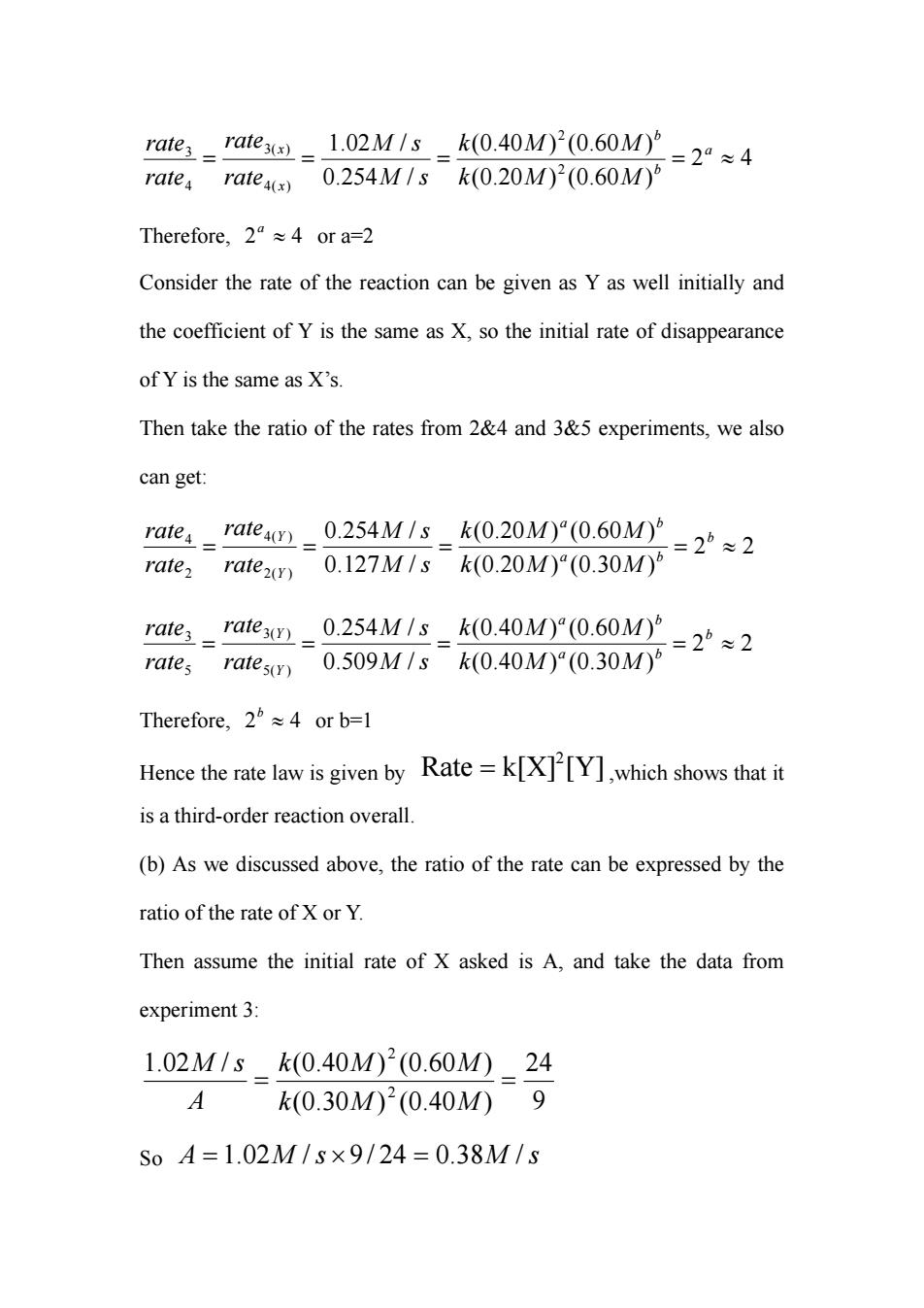正在加载图片...

rae3-ae3=1.02M/s-k(0.40M)2(0.60M =24≈4 rate,rate()0.254M/s k(0.20M)2(0.60M) Therefore,2a≈4ora=2 Consider the rate of the reaction can be given as Y as well initially and the coefficient of Y is the same as X,so the initial rate of disappearance of Y is the same as X's. Then take the ratio of the rates from 2&4 and 3&5 experiments,we also can get: rate=ae4n=0.254M/s-k(0.20M)°(0.60M0 =26≈2 ratez ratez)0.127M/s k(0.20M)(0.30M) ae=aem=0.254M/s_k0.40MP(0.60M rae,rates0.509M1sk(0.40M°(0.30M0° =2”≈2 Therefore,.2≈4orb-l Hence the rate law is given by Rate=k[X[Y],which shows that it is a third-order reaction overall. (b)As we discussed above,the ratio of the rate can be expressed by the ratio of the rate of X or Y. Then assume the initial rate of X asked is A,and take the data from experiment 3: 1.02M/sk(0.40M)2(0.60M)24 A k(0.30M02(0.40M)9 S0A=1.02M/s×9/24=0.38M/s42 )60.0()20.0( )60.0()40.0( /254.0 /02.1 2 2 )(4 )(3 4 3 == = ≈= a b b x x MMk MMk sM sM rate rate rate rate ≈ 42a Therefore, or a=2 Consider the rate of the reaction can be given as Y as well initially and the coefficient of Y is the same as X, so the initial rate of disappearance of Y is the same as X’s. Then take the ratio of the rates from 2&4 and 3&5 experiments, we also can get: 22 )30.0()20.0( )60.0()20.0( /127.0 /254.0 )(2 )(4 2 4 == = ≈= b a b a b Y Y MMk MMk sM sM rate rate rate rate 22 )30.0()40.0( )60.0()40.0( /509.0 /254.0 )(5 )(3 5 3 == = ≈= b a b a b Y Y MMk MMk sM sM rate rate rate rate ≈ 42b Therefore, or b=1 Hence the rate law is given by ,which shows that it is a third-order reaction overall. [Y]k[X]Rate 2 = (b) As we discussed above, the ratio of the rate can be expressed by the ratio of the rate of X or Y. Then assume the initial rate of X asked is A, and take the data from experiment 3: 9 24 )40.0()30.0( )60.0()40.0(/02.1 2 2 = = MMk MMk A sM So = sMA × = /38.024/9/02.1 sM